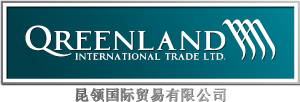Developed Distribution Strategies
as part of your value added services

A long period of time it had been believed that
• distribution,
• warehousing
• and supply chain management
have insignificant impacts on business operations. Since globalization, digitalization has moved to a new era, more companies realize the importance of those three business processes. Today’s fast moving technology develops people’s softskills accordingly. As consequence, companies that still underestimate warehousing as meaningless buffer for their inventory, not recognizing that warehouses developed to vital distribution centres, are loosing marketshare and competitive advantage. In the long term if those companies don’t take competitive advantage of developed distribution strategies, their competitors will.
In addition to that, most businesses aim at targeting their customers far and wide. If their distribution strategies are not up to date, they will risk the loss of higher turnover and hence margin. Every successful business or that is focusing to become one of those tries to expand in various markets. But to reach potential customers across the globe, they will need the right distribution strategies. Of course you will deliver a product a customer orders. If you do not have any clue how to save distribution related costs effectively nor how to boost distribution efficiency then your profit margin will decrease the more your competitors are aware of the distribution movement. All the budget that is set for marketing strategies will be effected by inefficiency; your brand reputation might get damaged as well by discontented customers due to inability of delivering on time or insufficient stock.
To leveraging your capabilities start to focus on these three bullet points:
• How will you get the product from the warehouse / manufacturer to the end customer?
• How will you control costs and save time while executing any distribution strategy?
• How can you build a competitive advantage through developed distribution strategies?
The macro level of distribution distinguishes between two types of distribution:
1. Indirect Distribution
Your end customer receives your product through various distribution channels in between. For instance, a manufacturer sells various products to distributors. One of the distributors offers its products to a retailer who then places various products in the show room. Once a customer buys one single item, the customer takes that item back home which has passed different distribution channels.
2. Direct Distribution
When the distribution channel is quite less or the manufacturer sells the product directly to the end customer. For instance, a company that is selling on e-commerce portals or other platforms like Amazon.
The micro level of distribution distinguishes between three types of distribution:
They are based on the level of penetration a company wants to achieve and is decided by the marketing-mix:
• product,
• price,
• promotions.
3. Intensive Distribution
When your company has a mass marketing product, it could use intensive distribution. In theory it allows you to cover as much of the market as possible, in reality you simply try. For instance, a fast-moving consumer good (FMCG) like Nestle. The end customer can buy its goods in different marketplaces, also online.
4. Selective Distribution
When your company appoints only a view distributors in urban cities. Clothing companies like Zara, Hugo Boss, UNIQLO have limited outlets in urban cities where customers can buy their products, approximately 3-5.
5. Exclusive Distribution
When your company gives a big region to one single distributor or one distributor is appointed for a country. When Zara, Hugo Boss, UNIQLO have approximately 3-5 outlets in each urban city, automobile companies like Ferrari and Lamborghini might have just one outlet in a region of 5-7 cities.
In general, your distribution strategy depends on each product line you have. Hence, you might need various distribution strategies for multiple product lines and lengths. While premium products require selective distribution, mass products need intensive distribution. If your distribution is dynamic, it might contribute a lot to your competitive advantage.

